BLOG 'A chronology of soundproofing systems London'
Low frequency noise (LFN) complaints, in the range of 20-160Hz, take disproportionately more time to investigate and, where possible, to resolve than other noise complaints. LFN sufferers describe their individual experiences with notable similarities to other LFN complainants and use strikingly consistent vocabulary, often using words such as ‘intense’ and ‘deafening’. Most perplexingly, visitors to the affected property often hear nothing.
The Salford method of assessing low frequency noise (based on the Defra-funded work of Moorhouse, AT, Waddington, DC and Adams, MD) is the benchmark by which LFN complaints are generally investigated. The Salford method does not specifically provide guidance in locating the source of the LFN, rather it is intended as a guide to distinguish cases where an environmental sound is responsible for a disturbance, from those cases where no causal sound source can be detected.
Low frequency noise complaints can be challenging to deal with for the following reasons:
- A noise that LFN sufferers describe as loud, intense, and even deafening, is often inaudible to others. This is because individual hearing thresholds vary. This problem rarely arises with high frequency sounds, because, in contrast to low frequency sounds, their perceived loudness increases slowly with an increase in acoustic energy.
- Compounding this issue, is the fact that sensitisation to LFN can occur over time. So, a brief visit to the affected property cannot provide an accurate impression of what it is like to live with the noise disturbance on a daily basis.
- *“Existing noise criteria are not appropriate for evaluating LFN. Established noise descriptors are based on the A weighted sound level (dB(A)) which effectively filters out the low frequency sounds.” As such, a standard handheld dB meter will fail to detect the noise levels the LFN sufferer is experiencing.
Evaluating, and dealing with, low frequency noise depends on whether or not an environmental source for the noise can be measured and examined for correlation with the sufferer’s experience, a record of which should be kept in a log. Often no environmental sound source can be found to account for the low frequency noise complaint, in fact quite the opposite; low frequency noise sufferers’ homes were found to have a striking lack of intrusive environmental noise: *“In all cases, the background noise levels in the residences were remarkably low. Such low levels of natural masking noise are thought to be a factor contributing to the disturbance of LFN.”
Furthermore, evidence was found, during fieldwork by Moorhouse et al, to contradict the view that low frequency noise sufferers had high sensitivity to noise, as their hearing thresholds were actually found to be higher than groups who did not suffer LFN (in other words LFN sufferers actually had a higher tolerance to background noise levels).
Field measurements and lab test results (which were used to establish a threshold of acceptability) provided information to produce a criterion curve to help asses LFN complaints where a noise source is actually found. Noise source levels can be measured to establish whether or not they exceed this standard.
The effect of fluctuations was examined to establish a suitable penalisation amount for fluctuating low frequency sounds, compared to steady sounds. *“Thresholds of acceptability were set typically 3-5dB higher for sounds with strong fluctuations than for steady sounds. It is therefore appropriate to penalize fluctuating sounds compared with steady sounds, and that 5dB is an appropriate level for such a fluctuation penalty.”
- L10-L90 < 5dB : no penalty.
- L10-L90 > 5dB : penalty of 5dB.
For more information on the Salford procedure for assessing LFN complaints, as based on the work of Moorhouse et al, and to read case studies and examples, which include laboratory tests and field measurements, as well as data collected from sufferers through interview-based questionnaires, please follow the link: A procedure for the assessment of low frequency noise complaints
*Moorehouse et al.

 +44 (0) 20 3858 0833
+44 (0) 20 3858 0833 email
email






















